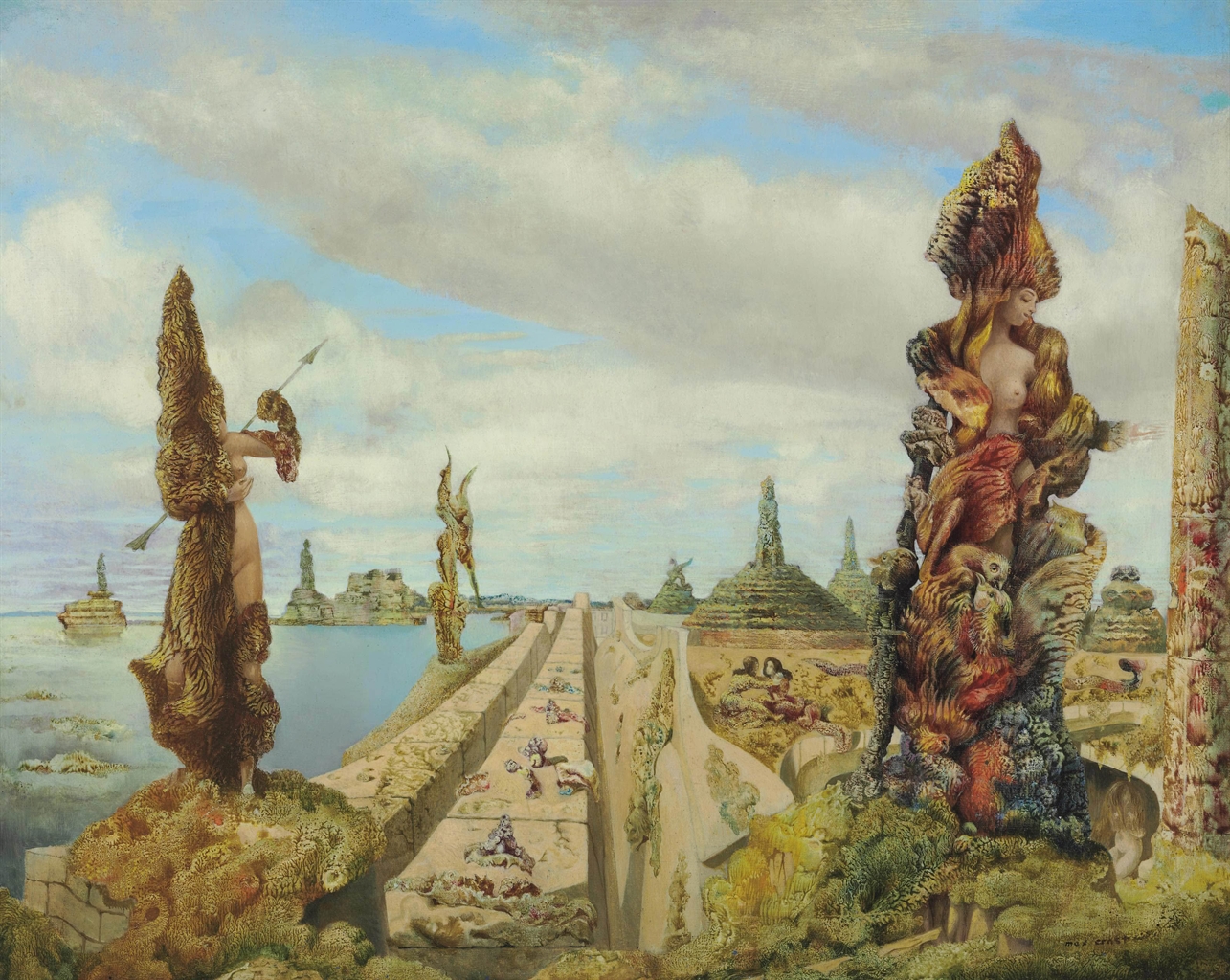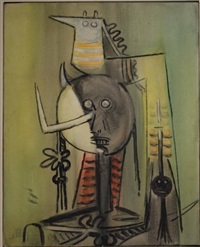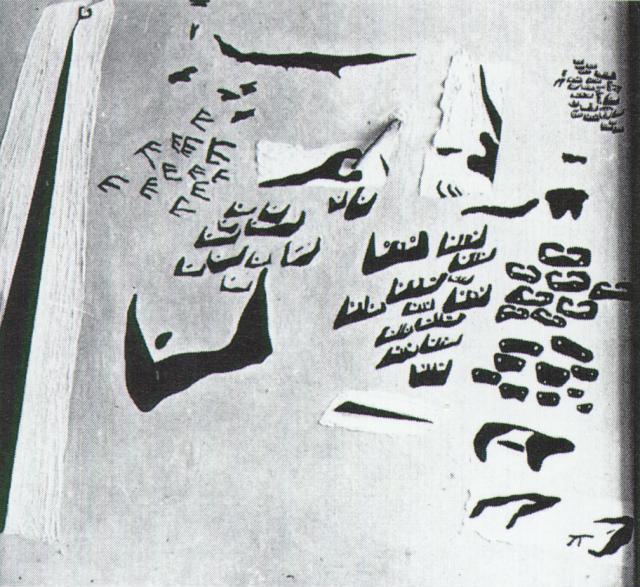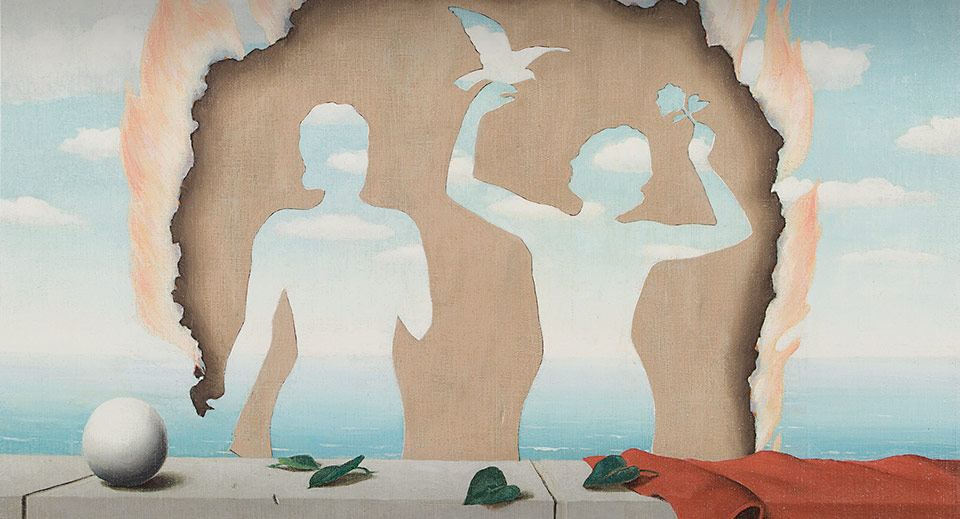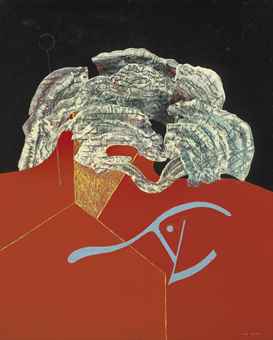Monday, January 18, 2016
Christie’s The Art of the Surreal Evening Sale on Tuesday 2 February 2016
Christie’s The Art of the Surreal Evening Sale on Tuesday 2 February 2016 comprises 42 lots by a total of 16 different artists, the broadest array to be offered to date. The sale is led by The Stolen Mirror a technical tour-de-force by Max Ernst and one of the artist's finest works (estimate: £7-10 million). Now in its 16th year, this much anticipated and unique annual standalone surreal sale features further highlights by Pablo Picasso, Wilfredo Lam, René Magritte, Joan Miró and Salvador Dali. Christie’s overall evening of Impressionist, Modern and Surrealist Art on 2 February has a total pre-sale estimate of £87.3 million to £129.1 million. These Evening sales open a week of five Impressionist, Modern and Surreal art sales at Christie’s King Street and South Kensington, across media and price points. With estimates starting from £300 up to £10 million the sales present new and established collectors with a wealth of opportunities to acquire and celebrate examples by masters of the period.
A museum quality work and the cover lot of the sale, The Stolen Mirror by Max Ernst (1891-1976) is a surrealist technical tour-de-force, highly autobiographical and one of the artist's finest works (estimate: £7-10 million). This dream-like landscape was painted in 1941 at the pinnacle of Ernst’s oeuvre, when he was using the decalcomania technique of manipulating paint which he picked up from Oscar Dominguez. Many Surrealists tried the technique though Ernst was the only one to adapt decalcomania in a sustained manner to painting in oils on canvas. Rarely employing it as an end in itself, but rather as a means to create the unexpected, he became a master of the technique and achieved a remarkable degree of control over a fundamentally unpredictable process. The current record for a work by the artist, realising £10,283,175/ $16,322,500 at Christie’s in 2011, this painting once belonged to Edward James, one of the foremost early collectors of Surrealist art; it was later re-acquired by Ernst’s son Jimmy Ernst and descended through the family to the estate of Edith Dallas Ernst, from which it was last sold. Previous sale: http://www.christies.com/lotfinder/paintings/max-ernst-the-stolen-mirror-5493627-details.aspx
Infused with a sense of drama and mystery, Chant de la Forêt by Wifredo Lam (1902-1982) captures the dark and enigmatic power of the Cuban landscape and stimulates the imagination in its suggestion of the presence of unseen forces, hidden in the depths of the forest (estimate: £1.3-1.8 million). Fusing vegetative forms with sharply angled shapes, the artist creates a hybrid creature, part animal, part plant and part mystical being. Its hybridity simultaneously referencing Surrealist thought, the indigenous landscape of Lam’s homeland, and the unique elements of the Afro-Cuban culture which survived there. Painted in 1946, Chant de la Forêt was created following Lam’s return to Cuba after almost two decades living in Europe. This homecoming prompted an extraordinary breakthrough in the artist’s work, as he reconnected with his cultural roots. Hinting at a presence beyond the conscious world, this work elegantly fuses the unique spiritual elements of the Cuban culture with its distinctively lush landscapes to achieve a bold new approach to Surrealism.
Throughout much of 1928 Salvador Dali was greatly preoccupied with ideas about anti-art, the establishing of a new-objectivity and the exploration of what his new Catalan friend Joan Miró had recently defined as ‘the assassination of painting’. Fishermen in the Sun is the finest of a unique, distinctive and very rare series of six relief-paintings made during this period in which Dali pioneered a completely new stylistic direction in his work; of these six paintings, four now reside in museums including the Fundación Gala-Salvador Dal, Figueras and the Reina Sofía, Madrid (estimate: £700,000-£1,000,000). In 1928, Dali embarked on a unique series of works that made use of real, tactile, three-dimensional materials and reduced his already amorphous and anamorphic forms to two-dimensional semi-abstract cyphers that simultaneously suggested many different things at once. His aim was to move beyond all the old ideas of painting while widening the revelatory potential of his art to speak directly to man’s unconscious mind. As Fishermen in the Sun highlights, Dali forged a series of radically new psychic landscapes that, with their suggestions of an atemporal sandy plain of strange hallucinatory possibility stretching out beneath a strip of empty blue sky, lay the foundations for the dramatic, hyper-realist paintings that he began his Surrealist career with in 1929.
Painted in 1942, Mesdemoiselles de l'Isle Adam by René Magritte (1898-1967) showcases the layers of wit, beauty, mystery and subversion that characterised the greatest of his pictures from the period (estimate: £2-3 million). It is telling that this picture has had such a distinguished history: after remaining in Magritte's hands for around a decade, it was acquired by his friend Justin Rakofsky, before entering the collection of Gustave Nellens, the owner of the casino at Knokke-le-Zoute, Belgium, which was decorated with monumental murals by Magritte. As with the greatest of Magritte's works, this painting plays with the viewer's preconceptions of art, and therefore of life. Mesdemoiselles de l'Isle Adam dates from a crucial watershed in Magritte's life when, in a bold response to the Second World War which had engulfed Magritte, his work moved toward a lighter and brighter approach.
Painted in March 1968, Femme et oiseaux dans la nuit (Woman and Birds in the Night) by Joan Miró (1893-1983) is a major large-scale painting of one of the artist’s favourite subjects, made for an important travelling retrospective exhibition of his work held at the Fondation Maeght in Saint-Paul-de-Vence, the Antic Hospital de la Santa Creu in Barcelona and the Haus der Kunst in Munich between 1968 and 1969 (estimate: £3-5 million). Of all these venues, it was Miró’s exhibition in Barcelona, his first in Spain for over fifty years, which was to prove the most lastingly important as it led directly to the establishment of the Miró Foundation there seven years later. Femme et oiseaux dans la nuit is one of several paintings on the poetic theme of women, birds and the night that Miró made in the mid-1960s, at a time when he was pursuing the joint influences of recent American painting and of Japanese calligraphy on his own uniquely poetic, instinctive and gestural style of painting.
At auction for the very first time, having been hidden in a distinguished private collection for over half a century, Fleurs coquilles sur fond marin, 1928, by Max Ernst (1891-1976) is a large red and black ‘shell-flower’ painting in which the artist presents a mysterious but also distinctly natural landscape of the kind that had distinguished his early frottage works in his famous graphic series Histoire Naturelle (estimate: £600,000-900,000). A colourful and also highly painterly combination of flat, abstract and geometric form with broad grattage scrapings of paint used to form two amorphous but strangely organic structures reminiscent of shells, flowers and geological rock formations, Fleurs coquilles sur fond marin is a work that invokes a strange, abstract world full of biological magic and possibility.
Featuring three works from The Fiterman Collection all by Joan Miró, The Art of the Surreal Evening Sale includes Tête, Paysage, Constellation (1974, estimate: £600,000-900,000, pictured page 1), one of a series of bold, free and dramatic paintings that the artist created in the early 1970s. Included in one of the largest retrospectives of Miró’s work held at the Grand Palais in Paris in 1974, this work employs some of the most central and iconic themes and pictorial motifs of Miró’s career – namely, the head of a figure, stars and a nocturnal landscape – and portrayed them with a dramatic simplicity and expressive power. Also offered for sale are a pair of Miró’s groundbreaking experiments with found objects and sculpture, including Femme et oiseau (1967, estimate: £700,000-1,000,000), one of the first of a pivotal series of painted bronze sculptures that Miró began of the same year. Another major work L’Oiseau au plumage rougeâtre annonce l’apparition de la femme éblouissante de beauté (The Russet-feathered Bird Announces the Apparition of the Dazzlingly Beautiful Woman), (1972, estimate: £300,000-500,000) soars from the ground at over two metres tall and illustrates the artist’s playful and inventive imagination, revealing his ability at envisioning birds and human figures from an amalgamation of seemingly incongruous, quotidian and natural objects.
As curving planes and facets of flattened monochrome colour collide and coalesce across the surface of the canvas, a surreal visage emerges in the striking Arlequin by Pablo Picasso (1881-1973) from 1926 (estimate: £1.5-2.5 million). Depicting two profiles of a face simultaneously, Arlequin is one of a series of split, biomorphic portraits that Picasso created while spending the summer on the French Riviera, and marks a major shift in the artist’s style as he left behind the rotund Neo-Classical goddesses that had graced his work of the early 1920s, and began painting darker, psychologically intense and dramatic subjects that exude a surreal, often disquieting quality. Painted with a stark palette, Arlequin has a compelling intensity, portraying with a striking economy of means, a labyrinthine depiction of the human face. Picasso’s art at this time appeared in some ways to align with the aims of the Surrealists; he shunned reality in his painting and unleashed his emotions to convey a psychological, subconscious and dramatic raw emotional response to life.
Overall, the sale presents surrealist works by a total of 16 artists, including further works by: Andre Masson; Giorgio de Chirico; Hans Bellmer; Man Ray; Oscar Dominguez; Paul Klee; Peter Rose Pulham; Victor Brauner; Wols; and Yves Tanguy.
